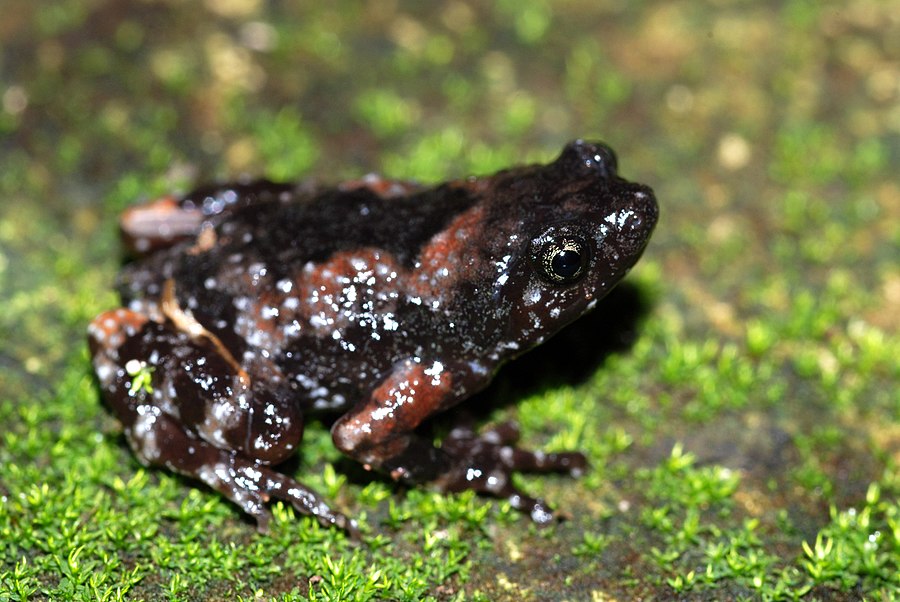Facts About Mountain Dot Frog
Uperodon montanus, commonly referred to by names such as Jerdon's narrow-mouthed frog, Jerdon's ramanella, mountain dot frog, mountain globular frog, or Malabar Hill frog, is a remarkable species native to the Western Ghats in India. These diminutive frogs, which were previously classified under the genus Ramanella, exhibit distinctive disc-like structures on their fingers but lack them on their toes. During the rainy season, they often inhabit tree holes in moist deciduous to evergreen forests.
These frogs possess a unique appearance, characterized by smooth yet bumpy skin. Their upper side is brown and adorned with dark spots. Male frogs feature a singular subgular vocal sac that inflates into a sphere when they call. The mating season commences post heavy rains in June or July, during which males float on pond surfaces and vocalize to attract females. Upon a female’s approach, they engage in a mating embrace known as axillary amplexus. Throughout the rest of the year, particularly during the summer, these frogs enter a dormant state known as aestivation.
Uperodon montanus is found across the Western Ghats, from the Dangs to southern Kerala. They flourish in diverse forest environments, including moist deciduous, semi-evergreen, and evergreen forests, preferring rainwater-filled tree holes. Unlike most other Indian microhylid frogs whose eggs float on water, Uperodon montanus lays its eggs attached to tree trunks just above the water level or on floating leaves.
Their calls are described as a series of "brong... brong... brong" sounds. If disturbed, males immediately cease calling. The mating behavior includes the male holding the female just behind her armpits in the water, a behavior known as axillary amplexus.

 Bhutan
Bhutan